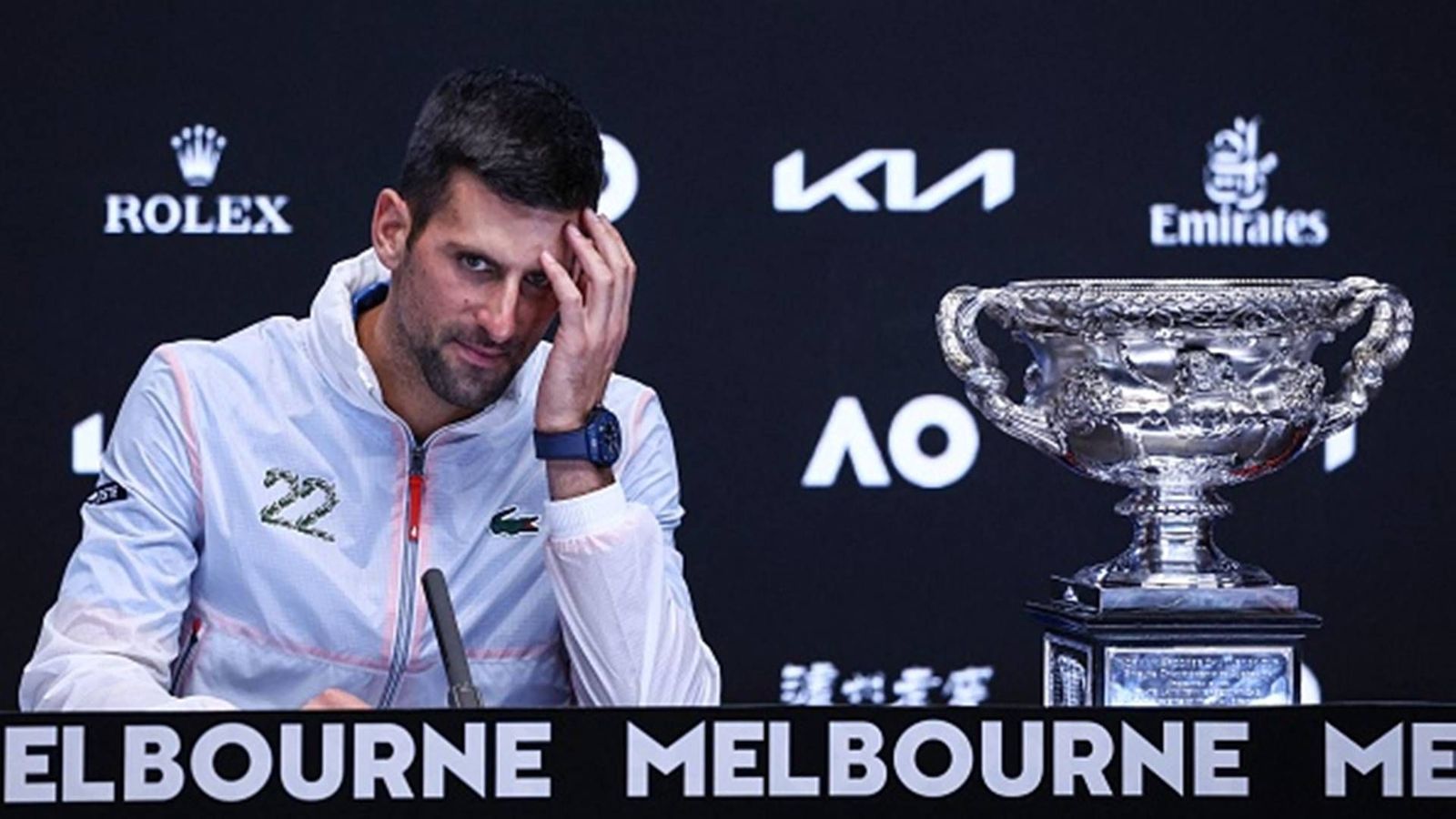Novak Djokovic reclaimed the no.1 spot in the ATP rankings after winning his 10th Australian Open title. Djokovic dethroned Carlos Alcaraz from the top as he jumped from no.5 to no.1. The four-place jump is the largest jump to top spot in the 50-year history of men's tennis rankings since it was computerised.
It turned out to be a fairytale comeback for the Serbian as he beat Stefanos Tsitsipas in straight sets 6-3 7-6 (7-4) 7-6 (7-5) to match legendary Rafael Nadal's tally of 22 major singles titles for a male tennis player. Last year, he was deported from Australia for not taking the Covid-19 vaccine after a failed appeal in a federal court. Eventually Nadal won the title after beating Daniil Medvedev.
A year later, the 35-year-old stamped his authority and did not let Tsitsipas win the crunch moments as he emerged victoriously in two consecutive sets where the winner was decided by tiebreaker.
“You never know how much more time you have left, so, of course, I nurture and celebrate these moments of becoming No. 1 again and Grand Slam champion," Djokovic said after winning the title on January 29.
Djokovic, who was struggling with a hamstring injury in the first week of the tournament, was in floods of tears and dropped to the floor in his box after being mobbed by his team following what he described as "the biggest victory of my life" in his on-court interview.
He said: "When I went into my box, I just think I emotionally collapsed there and teared up with especially my mother and my brother, when I gave them a hug, because up to that moment I was not allowing myself to be distracted with things off the court or whatever was happening in dealing with an injury. Things happening off the court, as well, that could easily have been a big disturbance to my focus, to my game.
"It required an enormous mental energy really to stay present, to stay focused, to take things day by day, and really see how far I can go.
"If I turn back the time two and a half weeks ago, I wasn't really liking my chance in this tournament with the way I felt with my leg. Then it was just a matter of survival of every single match, trying to take it to the next round.
"The good thing about the grand slam here is that you have a day between the matches, so it allowed me to have more time than normally on some other tournaments to recover, to try to do all the treatments in order to get myself in somewhat of a good state and condition to play and eventually win.
“From fourth round onwards, I feel the leg was not bothering me as much. I felt my movement was much better. I played some of my best tennis in the Australian Open. The fourth round, quarter-final, semi-finals, just really comfortable on the court, hitting the ball great. I knew that against Stefanos, it's going to be different match than what I had throughout the entire tournament.”


